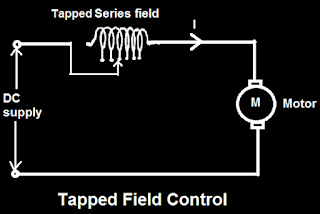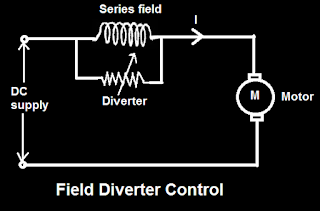Field control of DC motor
2 Answers
Answer :
Field control of DC motor
•In field control of DC motor terminal voltage is kept constant.
•The field flux (φ_f) is directly proportional to the field current (I_f) .
•Speed (N) is inversely proportional to field flux (φ_f) .
•So as the field flux (φ_f) will be less speed (N) will be more.
•If the current is less field flux (φ_f) is less hence the speed (N) will be more.
•We can control speed by field diverter method or by using tapped field control.

